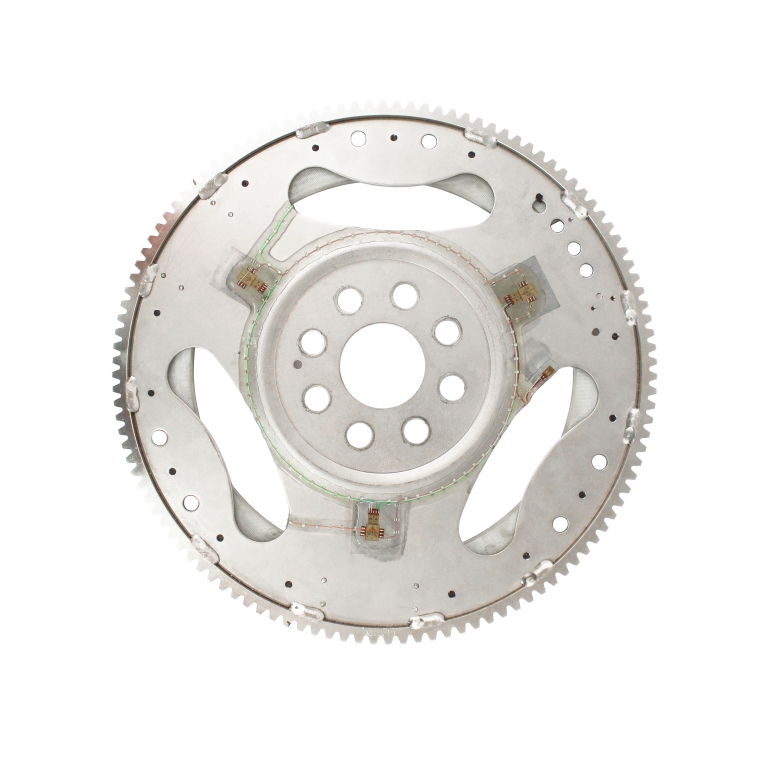Features
- Measure engine harmonics and cylinder firing events
- Induction powered with no slip rings or batteries
- NIST traceable with combined accuracy of 1%
- 3 channel systems available for torque, thrust, temperature
- Directly replaces existing flexplate or flywheel
- Analog output with 3kHz frequency response
- User selectable scaling
- Completely weatherproof
- Can be used in electric vehicle engine testing
Description
The Telemetry Torque Measurement System measures engine torque with a custom transducer installed between the engine and transmission. It is designed to take the place of a stock flexplate or flywheel without the need for any engine or transmission modifications. The transducer is telemetry based, allowing engine torque data to be transmitted from the rotating system to a stationary receiver via a radio frequency signal. Three channel systems are available for torque, thrust, and temperature measurements.
Flexplate Torque Measurement Systems are often used for engine and transmission development in both gasoline and hybrid powered vehicles. This allows for accurate and reliable benchmarking and vehicle efficiency analysis, from consumer vehicles to racing cars.
Torque is sensed by strain-gauged beam elements (spokes) located on the transducer. Instead of machining the beam elements into the production flex plate, a new custom transducer was machined from a high strength stainless steel alloy. This alloy has superior properties to the production material. This insures optimal transducer performance without compromising strength due to the introduction of spokes. Provisions to mount the secondary coil and electronics are also added to the transducer design. The transducer is designed to take the place of the stock flex plate without any engine or transmission modifications. Torque data is transmitted from the rotating system to the stationary receiver via an RF signal. After detection by antennas mounted on the stationary induction primary, the signal is decoded and converted to an analog signal corresponding to torque. A filter in the receiver provides a bandwidth of 3.0 kHz.
Specifications
- Torque capacity: Customer Specified
- Torsional stiffness change: less than 25% difference from stock
- Axial stiffness change: less than 10% difference from stock
- Calibration Range: 0- Full scale
- Operating temperature range: -40 – 120*C
- Maximum speed: 7000 RPM (contact directly for higher speed request)
- 0% full scale combined accuracy
- Output signal: +/- 10 VDC (scalable)
- Input power requirements: 11.0 – 15.0 VDC, 5.0 amp max
- System frequency response: 3000 Hz
Documents
Last Modified:

